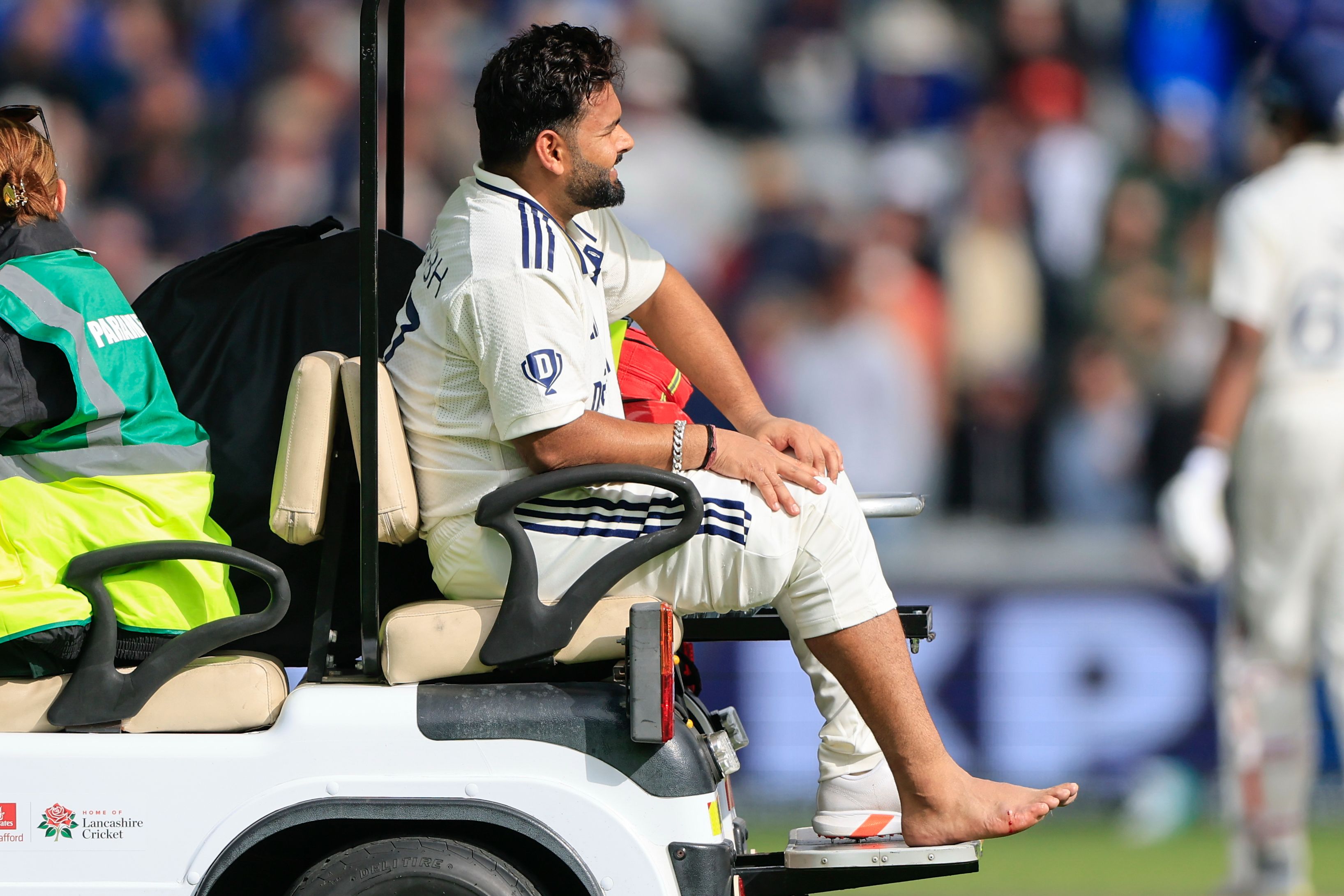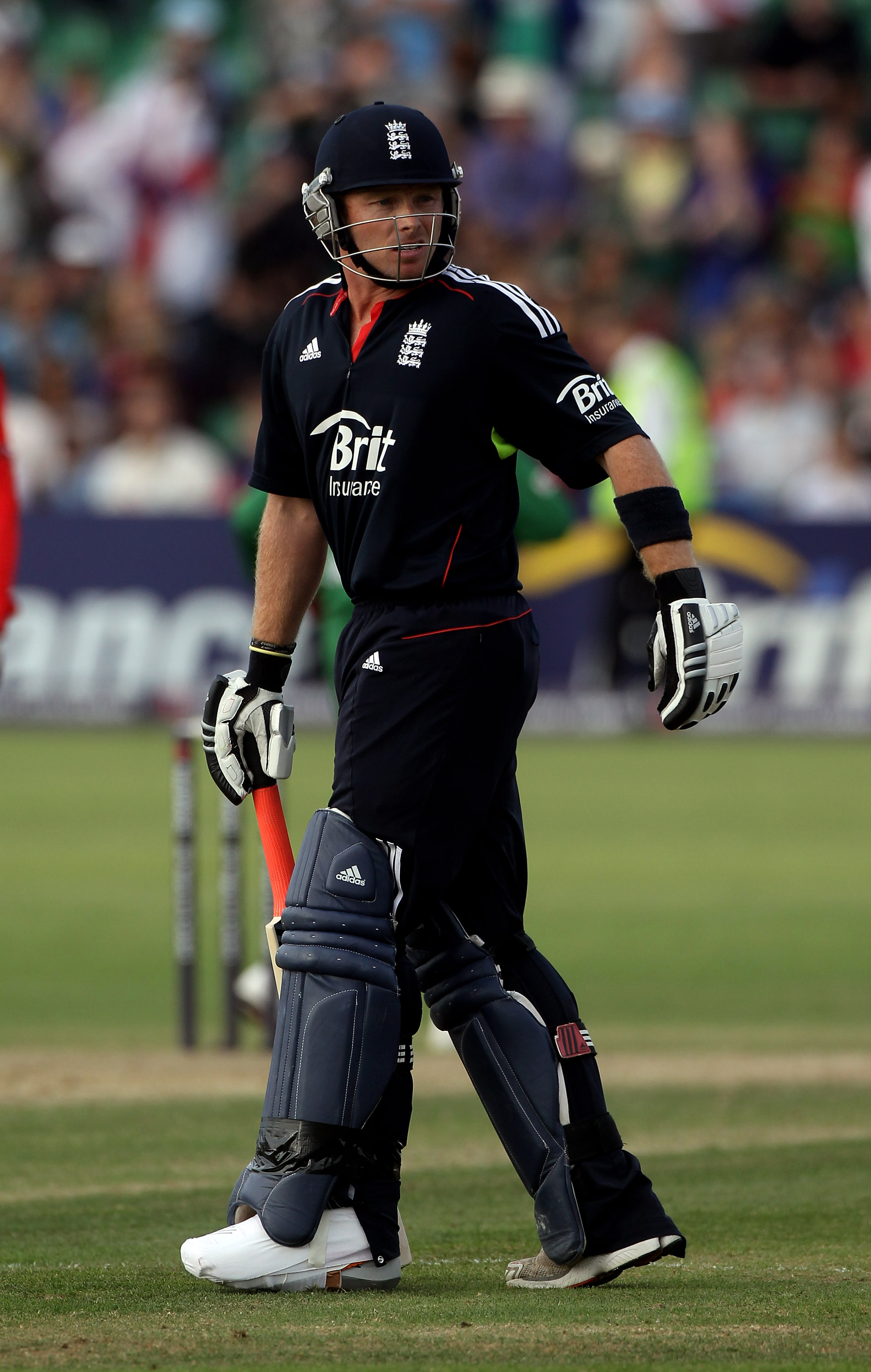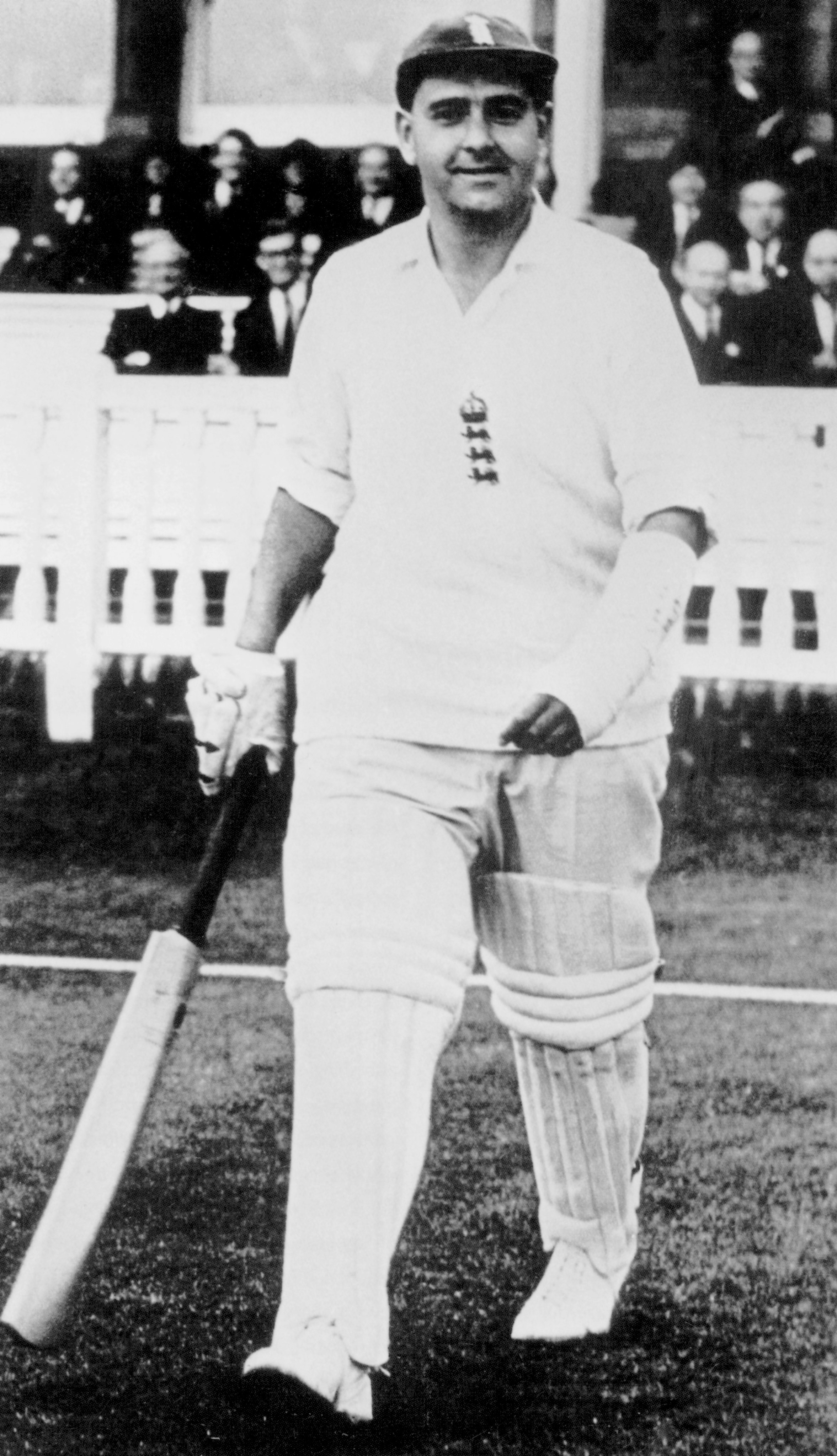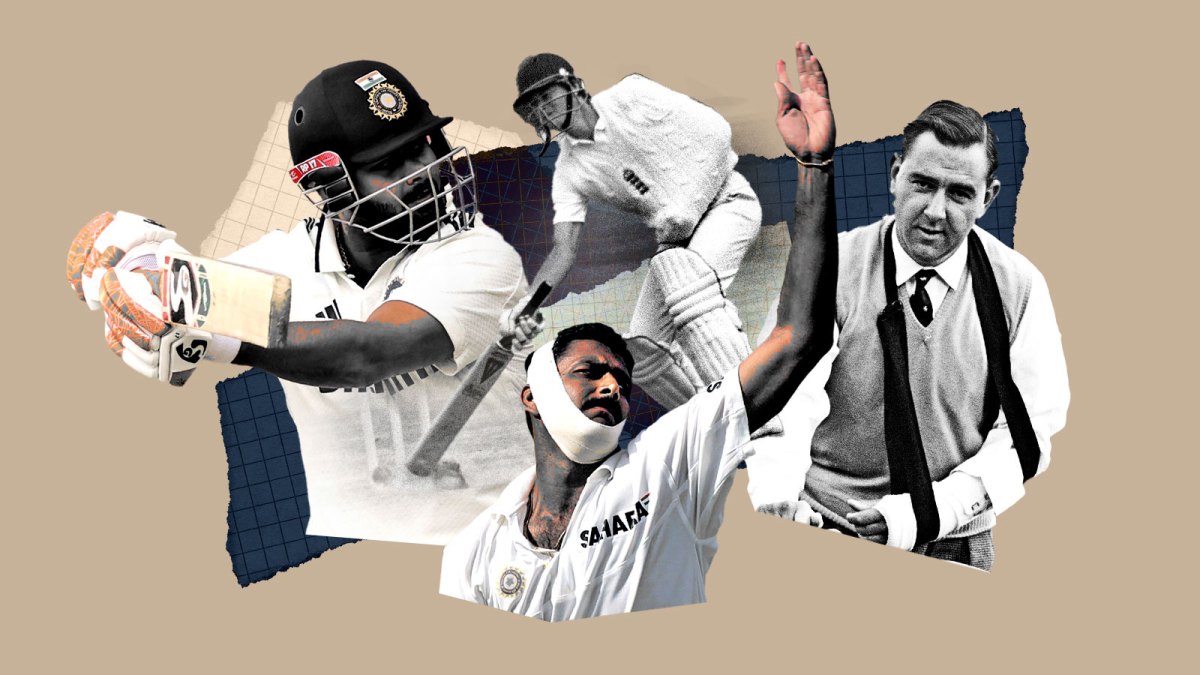The first indication that Rishabh Pant might bat yesterday, after the crunching blow he took to his right foot on Wednesday evening, was when the Indian team’s social media feed put out a statement at 11.45am saying he would not keep wicket but “will bat as per team requirements”.
Shortly after, he was seen on the dressing-room balcony in his whites, ready to play, and half an hour later, at the fall of Shardul Thakur’s wicket, was hobbling to the middle to resume his innings to a mixture of awed silence and smattered applause.
Cricket occasionally throws up these bizarre situations where a player is emboldened, largely out of loyalty to their colleagues, to bat or bowl despite carrying the sort of serious injury that in other spheres of activity would debar them from action.

Pant was forced to leave the field in an unconventional manner when he retired hurt on Wednesday evening
SHUTTERSTOCK EDITORIAL
Pant’s challenge was that he could not move freely and had to fashion shots from a fixed position and could only shuffle through for singles. His best shot was a punched cover-driven four against Ben Stokes while a slow ball from Jofra Archer also got the treatment over midwicket.
England’s difficulty was not to get distracted by an incapacitated opponent. With a tighter field they could have made runs harder to come by. They eventually got their tactics right, with Stokes and Archer bowling full and fast. Stokes did not shirk from striving for yorkers. In the end a superb ball from round the wicket from Archer uprooted Pant’s off stump in almost identical fashion to the delivery that accounted for him at Lord’s.
But in adding 17 from 27 balls, Pant did enough to suggest that he will attempt to bat in the second innings, assuming he has not done further damage to his foot during his 70-minute stay.
Please enable cookies and other technologies to view this content. You can update your cookies preferences any time using privacy manager.
Enable cookiesAllow cookies once
Of similar scenes in Test cricket, the nearest case to Pant’s was perhaps Ian Bell limping out to bat at Bristol in an ODI in 2010 with a moon-boot protecting his broken left foot in a brave but futile attempt to deny Bangladesh a first victory over England. Bell had fractured his foot leaping for a catch; when he went in, England needed ten to win with Jonathan Trott on strike, but Trott had added only four when he was dismissed without Bell receiving a delivery.

Bell’s decision to battle on with a fractured metatarsal in 2010 failed to save England from defeat by Bangladesh
JULIAN HERBERT/GETTY
Two England batsmen have resumed innings in Tests against West Indies after suffering broken arms. Colin Cowdrey walked out with his left arm in plaster at Lord’s in 1963 with two balls left and England nine wickets down. David Allen survived both balls to secure the draw. Had Cowdrey been required to face, he intended to bat left-handed.
Paul Terry went out to join Allan Lamb at Old Trafford in 1984 with England needing 23 to avoid the follow on and Lamb himself needing two for his century. Terry’s emergence from the pavilion took many by surprise and the tactics were unclear.

Terry, batting one-handed with his arm in a sling, was helpless to keep out a missile from Garner as the West Indies beat England at Old Trafford in 1984
KEN KELLY/GETTY
When Lamb secured his hundred he began to walk off, thinking Terry had joined him with that in mind, but England captain David Gower signalled for them to continue, a helpless Terry then being bowled by his first ball from Joel Garner. With defeat inevitable, Terry did not bat in the second innings.
Rick McCosker provided one of the bravest exhibitions of batting when in the Centenary Test at the MCG in 1977 he batted for more than an hour with a broken jaw, helping Rod Marsh in a stand of 54 that eventually proved decisive in a contest won by Australia by 45 runs.
Denis Compton was forced to retire early in his innings against Australia at Old Trafford in 1948 after taking a blow over the left eye from a Ray Lindwall bouncer. Fortified by some stitches and an old-school remedy of a large glass of whisky, he returned to ride his luck and strike an unbeaten 145.

Cowdrey famously came out to bat with a broken arm against the West Indies at Lord’s in 1963
PA
Steve Smith faced stricter medical guidelines when he was felled by Archer at Lord’s in 2019. He managed to persuade the team doctor to let him continue but was out after slogging for nine balls, and was pulled out of the game the next day, Marnus Labuschagne taking his place as a concussion substitute. Cases like McCosker’s and Compton’s would not happen these days because of concussion regulations.
Had batsmen not been denied the use of a runner since 2011, someone in Pant’s situation would have been spared the need to hobble for singles. Graeme Fowler, of Lancashire, once scored a century in each innings, both times with the help of a runner.
Many batsmen have performed gamely while carrying on with a broken finger or thumb, but two cases worthy of mention are Damien Martyn scoring 88 in the World Cup final of 2003 while unable to place his broken right index finger on the bat handle, and Graeme Smith, the South Africa captain, attempting to bat out a Test in Sydney in 2009 with a broken hand only to be dismissed with ten balls left.
Heroism is not confined to batsmen. Malcolm Marshall broke the thumb on his left (non-bowling) hand at Leeds in 1984. He had the thumb, palm of the hand and wrist encased in plaster, but still went out to bat at No11 to help Larry Gomes reach his century, facing eight balls entirely one-handed, before — to England’s astonishment — demolishing their second innings with his good hand, taking seven wickets with no diminution in pace.
India’s Anil Kumble dismissed Brian Lara during a spell of 14 overs in Antigua in 2002 despite his head being swathed in bandages after his jaw was broken by a Mervyn Dillon bouncer. “It was one of the bravest things I’ve seen on the field of play,” said Viv Richards, who knew a thing or two about bravery having chosen never to bat in a helmet in his life — and only once being hit.
